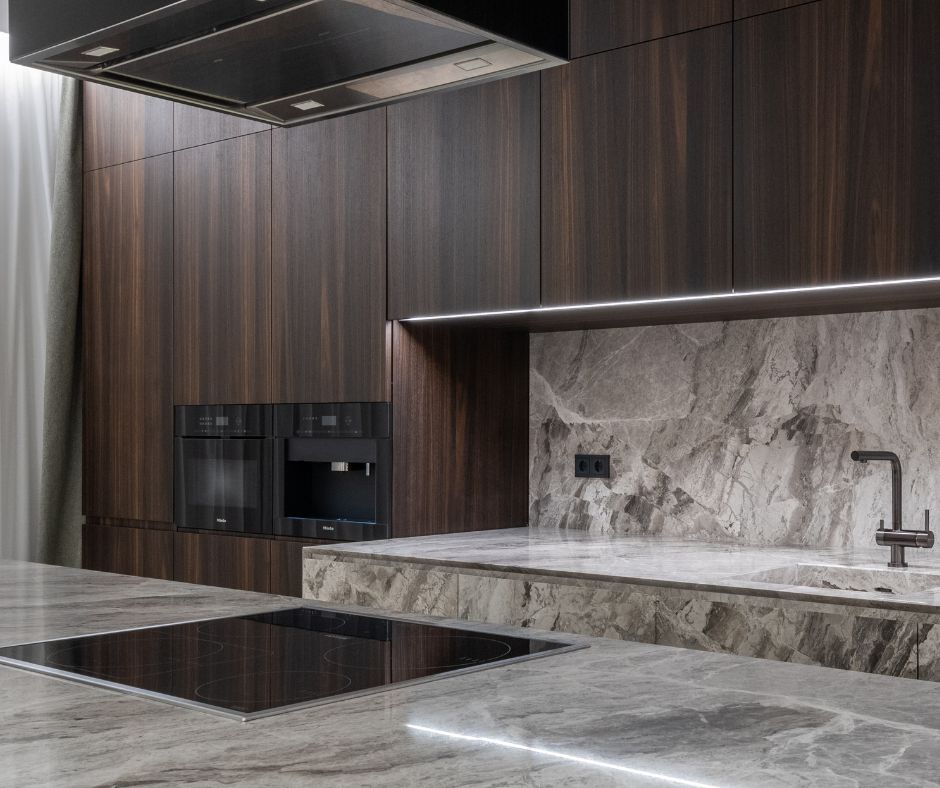Innovative kitchens play a crucial role in fostering new culinary traditions and practices that significantly elevate cooking experiences. While induction cooking technology may seem like a groundbreaking advancement, its origins trace back to the early 20th century. Initial demonstrations in the 1930s captivated audiences, showcasing the remarkable ability to boil water using magnetic energy without any visible heat source. However, it is only in recent decades, propelled by substantial advancements in technology, efficiency, and design, that induction cooktops have firmly taken root in modern kitchens, fundamentally transforming how meals are prepared and enjoyed.
Today, an increasing number of home chefs and culinary enthusiasts are wholeheartedly embracing induction cooking due to its extraordinary blend of sleek aesthetics, exceptional precision, and unmatched energy efficiency. This innovative cooking method not only accelerates meal preparation but also revolutionises the art of home cooking, seamlessly merging the science of heat management with culinary creativity in every dish crafted on its elegant, polished surface. With the right induction cooktop, you can achieve cooking speeds that rival those of a microwave, allowing you to create delightful family meals in record time!
Unlocking the Full Potential of Flavour and Nutrition with Precision Cooking Techniques
Unlike traditional gas or electric ranges, induction cooktops directly heat cookware through electromagnetic energy. This revolutionary approach eliminates wasted heat, prevents burnt edges, and provides exceptional control over both low and high temperatures. When you can manage heat with such precision, your ingredients retain more of their natural moisture, flavour, and nutritional integrity. Whether you’re quickly flash-searing proteins, gently simmering sauces, or swiftly blanching vegetables, induction cooking makes achieving perfect results an effortless endeavour, successfully avoiding overcooked meals and the degradation of essential nutrients.
Discovering Sleek and Stylish Induction Cooktops: Optimising Space While Minimising Stress
In kitchens where every square centimetre is at a premium, induction cooktops excel not only in performance but also in visual appeal. Their flat, smooth surfaces seamlessly integrate into your countertop, contributing to a minimalist aesthetic that creates additional space for food preparation, plating, or even casual dining experiences. Induction cooktops not only enhance the overall look of your kitchen but also serve as functional workspaces that inspire creativity.
In contrast to traditional gas hobs, which are often bulky with grates and protruding burners, induction cooktops sit flush with the countertop surface. While ceramic stovetops may offer a sleeker appearance, they often remain dangerously hot long after cooking has finished, posing a risk for burns. This distinction highlights the safety and design advantages of choosing induction cooktops for your culinary needs.
By comparison, induction surfaces cool down rapidly once the cookware is removed. The heat is produced by the magnetic interaction between the cooktop and the cookware, rather than by the cooktop itself, meaning that the glass surface retains significantly less heat. This feature not only makes cleaning safer and easier but also creates a more secure environment while cooking. This is particularly advantageous for households with children or pets who may be curious about kitchen surfaces, allowing for a more enjoyable cooking experience.
The result? A cooler kitchen with cleaner lines and increased flexibility—ideal for modern cooks who value both form and function in their cooking spaces. Induction cooktops are not just appliances; they are integral components of a contemporary kitchen that enhance lifestyle and efficiency.

Your Comprehensive Guide to Selecting the Right Cookware for Induction Cooking
Transitioning to induction cooking may come with a bittersweet realisation—you might need to part ways with some beloved old pans. Since induction technology operates on magnetic energy for heat generation, it’s crucial to understand that not all cookware will be suitable for this method. This shift can be viewed as an opportunity to upgrade your kitchen gear.
For cookware to function effectively on an induction cooktop, it must be constructed from ferrous (magnetic) metals, such as cast iron, carbon steel, or magnetic-grade stainless steel. A simple test with a fridge magnet can determine compatibility: place a magnet on the bottom of the pan. If it adheres firmly, you’re set to go. This straightforward method ensures you make informed decisions when purchasing new cookware.
When selecting new cookware, choose pans with a heavy, flat base. This design ensures optimum contact with the cooktop, delivering even heat distribution, which is crucial for achieving perfect browning, tender roasts, and crispy edges. Furthermore, high-quality induction cookware is engineered to resist warping over time, ensuring consistent cooking performance for every meal prepared. Investing in durable cookware pays off in the long run.
Although it may be difficult to bid farewell to old favourites, view it as an upgrade. In exchange, you gain enhanced control, faster cooking times, and dishes that showcase even richer flavours and textures. This transition not only improves your cooking experience but elevates your culinary creations to a new level.
Induction Cookware Quick Checklist: Essential Items for Successful Cooking
 Conduct a fridge magnet test—strong adhesion indicates induction compatibility
Conduct a fridge magnet test—strong adhesion indicates induction compatibility Prefer flat-bottom pans to ensure optimal contact and heat distribution
Prefer flat-bottom pans to ensure optimal contact and heat distribution Select cast iron, carbon steel, or magnetic stainless steel cookware
Select cast iron, carbon steel, or magnetic stainless steel cookware Avoid cookware made solely from copper, aluminium, or glass unless explicitly marked for induction use
Avoid cookware made solely from copper, aluminium, or glass unless explicitly marked for induction use Look for the induction symbol (resembling a horizontal coil or a series of loops) stamped on the base or packaging
Look for the induction symbol (resembling a horizontal coil or a series of loops) stamped on the base or packaging
Pro Tip: The induction symbol often resembles a zigzag or spring coil graphic. Spotting it guarantees cookware compatibility. This knowledge empowers you to make informed decisions when selecting your kitchen essentials.
Essential Installation Considerations for Your Induction Cooktop
Before embarking on your culinary adventure with your new cooktop, it’s vital to prioritise several crucial installation essentials to ensure optimal functionality:
-
Professional Installation Is Crucial: Induction units often require dedicated electrical circuits and specific clearances. Ensure you engage professionals who understand these requirements for optimal setup and performance.
-
Hire a Licensed Electrician: Wiring a high-powered induction cooktop is not a DIY task.
Discover why hiring a qualified electrician is imperative to ensure safety and compliance with local regulations. -
Verify Your Power Setup: Some induction models consume considerable power. Before making a purchase, confirm that your wiring meets the cooktop’s specifications to avoid complications and ensure reliable operation.
Proper installation not only guarantees optimal performance but also ensures safety and longevity of your induction cooktop, providing peace of mind as you create culinary masterpieces in your kitchen.
Key Insights Regarding the Multifaceted Benefits of Induction Cooking
Induction cooking offers more than mere speed or safety—it’s inherently intelligent. With the right cookware and a professionally installed system, you can consistently achieve better tasting meals, richer textures, and healthier options, meal after meal. In contemporary kitchens, precision cooking is not simply a preference; it has evolved into the new standard that many home cooks aspire to reach, enhancing both their culinary skills and enjoyment.
Frequently Asked Questions About Induction Cooktops
1. What Makes Induction Cooktops Superior to Gas or Electric Alternatives?
Induction cooktops provide immediate heat control, enhanced energy efficiency, and improved safety features. Since they heat the cookware directly, meals cook more rapidly with less energy waste, while the surfaces remain cooler, significantly reducing the risk of burns and enhancing kitchen safety.
2. Can I Continue to Use My Existing Pots and Pans on an Induction Cooktop?
You can use your existing cookware only if it is magnetic. Cookware made from cast iron or magnetic stainless steel is ideal for induction cooking. You can easily check compatibility by placing a magnet on the base—if it sticks firmly, it is suitable for induction use. This simple test can save you time and money when upgrading your kitchen.
3. Does Induction Cooking Affect the Flavour of Food?
Yes, and in a highly beneficial manner. Because induction cooking allows for precise temperature control, you can sear, sauté, or simmer without overheating, thereby preserving the natural flavours, textures, and nutrients far more effectively compared to inconsistent gas or electric heat sources. This results in tastier, healthier meals for you and your family.
4. Is Special Wiring Necessary for an Induction Cooktop?
Most induction cooktops require a dedicated electrical circuit and specific voltage and amperage configurations. It’s vital to have a professional electrician evaluate and install your wiring to ensure compliance with safety standards and to guarantee optimal performance, which is essential for a successful cooking experience.
The post The Secret Ingredient in Modern Kitchens: Induction Cooktops Are Changing the Game appeared first on https://cookinggods.com
The Article Induction Cooktops: The Game-Changer in Modern Kitchens Was Found On https://limitsofstrategy.com
The Article Induction Cooktops Revolutionising Contemporary Kitchens found first on https://electroquench.com

